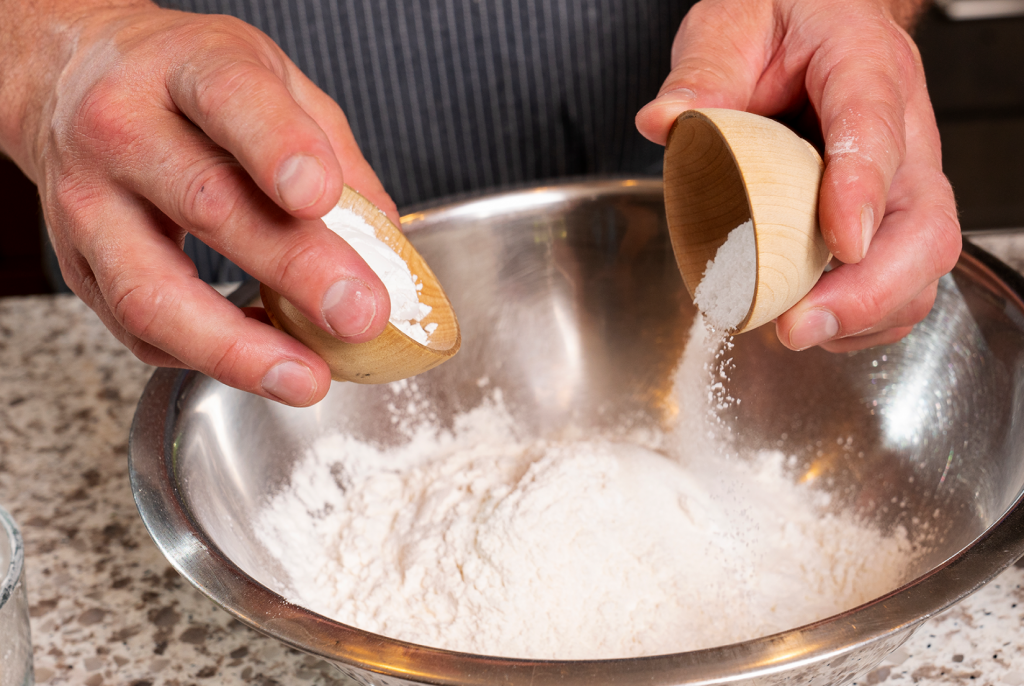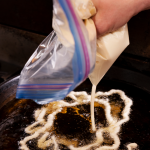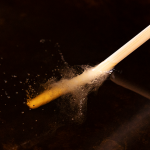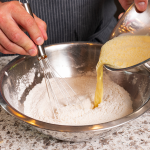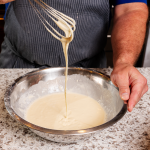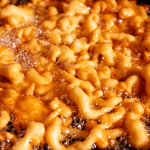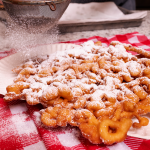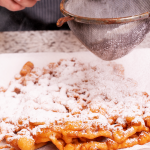Photos by LG Patterson
When walking through a fair, you will smell a variety of foods. One food smell stands out more than the rest: funnel cake. Once you have smelled a funnel cake, the aroma is embedded in your brain forever.
Funnel cakes were originally brought to the United States by the Pennsylvania Dutch in the late 1800s as a yeast-risen dessert called Drechderkuche. Once the yeast was replaced with baking powder, the name was changed to funnel cakes. The taste and the smell are synonymous with food from county fairs, but many cultures around the world have similar dishes that pre-date the funnel cake.
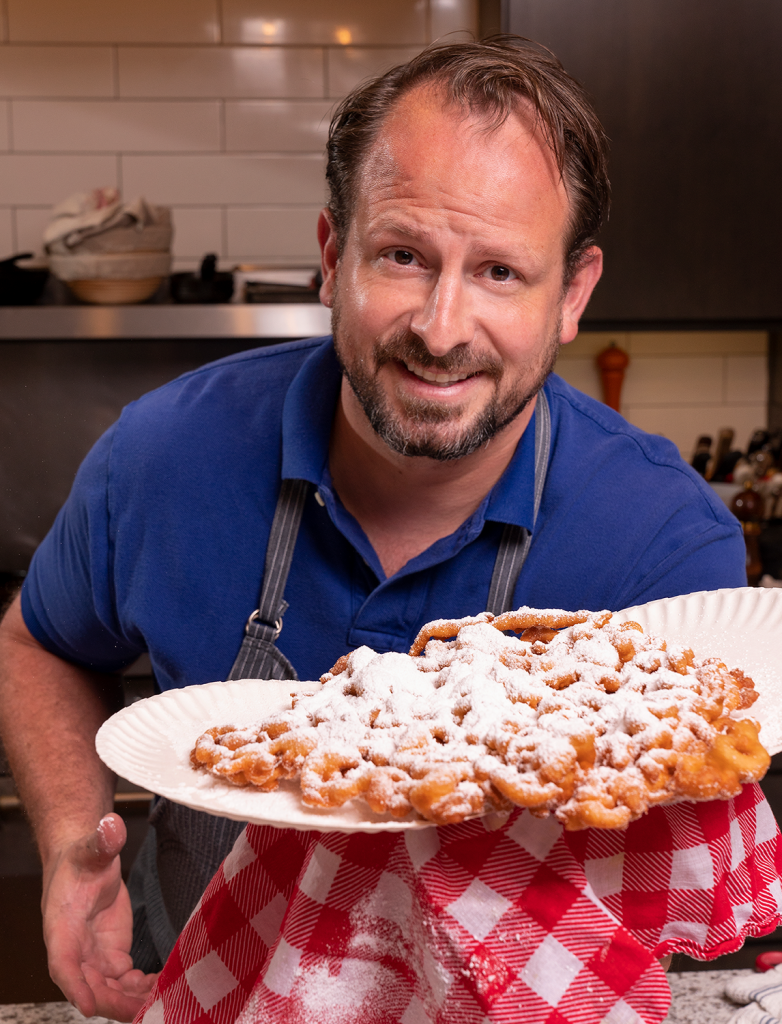
Batter
The batter can be made a few hours beforehand — and a day or two should be fine. You may lose a little puff because the baking powder releases its first gas when it comes in contact with the milk, but it will still puff when it comes in contact with the heat from the oil. If the batter seems a little too thick, add a bit more milk. It if seems a bit too thin, add a bit more flour. This is for a SLIGHT adjustment. First, check to make sure there were no major measuring errors, then adjust. Adjusting frying batter is more lenient than most baked products. Probably has to do with the copious amount of sugar added afterward.
FRY
There is a method when frying, at least if you want the funnel cake to be a cake and not 100 tiny fried pieces of dough (which is still delicious). Make sure the batter is the correct consistency, adjust if needed. Batter should be placed in a funnel, zip-closure bag or piping bag (see recipe below). When dispensing the batter into the hot oil, do so in a pattern of: circle, zigzag, circle. The first few circles of batter will give it the shape, then the zigzags will connect the circle and fill in the holes (but make sure not to fill in all the holes, you want steam to get through). Then the final circle will help connect it all. If you just zigzag and wiggle everywhere, it will still work and probably turn out fine, it just may not be as uniform as the previous or next funnel cake.
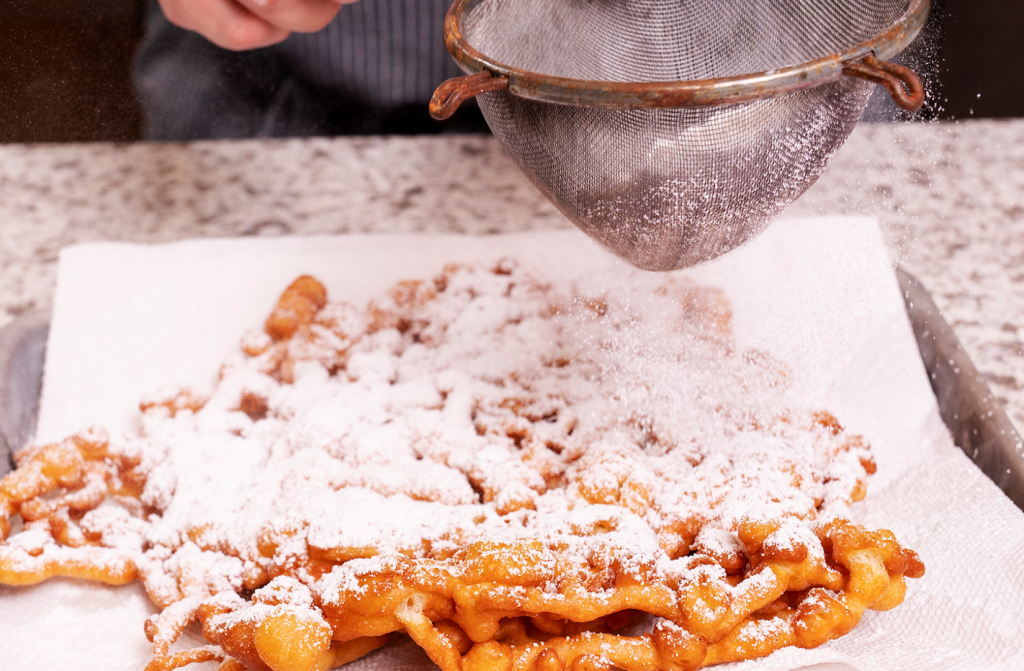
Powdered sugar is king. There is just something about getting a funnel cake when it is hot out of the oil and freshly topped with powdered sugar and has barely had time to cool. You are on a dangerous path of burning your fingertips and mouth, but if you time it just right, it is so worth it. That being said, there are a lot of other good ingredients that can go on top of your funnel cakes.
DIRECTIONS
Mix the dry ingredients and wet ingredients in separate bowls. Mix the wet mixture into the dry, just until smooth but not overworked. The consistency should be slightly thinner than pancake batter but thicker than custard or eggnog. You can use a ladle and a funnel to dispense the batter into the hot oil (350 to 375 degrees) or transfer it to a piping bag or zip-closure bag and cut off the tip. Carefully stream (pipe) about 6 ounces of batter into the hot oil from about an inch above. Too high and you may splash, too low and you might touch the oil. Fry for about 1 to 2 minutes on each side until golden brown. Set on to a paper towel and top with powdered sugar or other toppings as desired and serve immediately. Don’t burn your fingers — and enjoy.
INGREDIENTS
2 cups flour
2 tablespoons cornstarch
1 tablespoon sugar
1 tablespoon baking powder
1 teaspoon salt
1 egg
1½ cup milk
2 teaspoon vanilla
Oil for frying – should be about 2 inches deep, but at least an inch from the top of the pan


